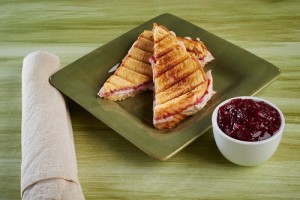Tips for Thanksgiving Leftovers
After planning and serving the Thanksgiving meal it’s time to plan what to do with the Thanksgiving leftovers. This is the perfect time of year to make extras in anticipation of having a quick reheated meal later. Some considerations for leftovers are how to store leftovers, food safety and reheating foods. These tips will help guide you so you can safely enjoy Thanksgiving feast foods after the holiday.
Storing Leftovers
How leftovers are stored can make a difference in the quality when ready to reheat and eat.
- Use airtight, leak-proof containers to store leftovers. Plastic storage containers, zip-top bags and jars with lids all work well and can be used in the refrigerator or freezer.
- Remove stuffing from the turkey and store the meat and stuffing in separate containers.
- Slice turkey and refrigerate or freeze in small batches for sandwiches.
- Instead of storing the whole batch, consider making individual servings or a one-serving plate for a quick and easy meal or side.
- When freezing leftovers use a piece of masking tape and label with the date and items to quickly identify later.
- Store cranberry sauce in a covered container—remove from the can.
- Store desserts that contain dairy or other perishable ingredients in the refrigerator instead of on the counter.
Food Safety
People with kidney disease and those over age 65 may be at a higher risk for foodborne illness. The reason is because they are more likely to have weaker immune systems and chronic inflammation. However, by practicing food safety measures you can prevent illness.
- Wash your hands and disinfect surfaces often.
- Use a thermometer to assure meat is cooked to the right temperature.
- Pay attention to time. It’s not safe to eat leftovers that have been sitting out over 2 hours. Refrigerate leftovers as soon as possible after the meal.
- If leftovers are hot, like gravy or vegetables warmed in a slow cooker or heating pot, cool down before storing in the fridge. Consider dividing into smaller containers instead of a large container to speed up the cooling process.
- If needed, adjust the refrigerator temperature to a lower setting when storing larger amounts of food. Plus, allow room for air circulation in the fridge.
Reheating Leftovers
When you are ready to eat leftovers there are a few considerations that may make your meal better.
- If refrigerated, plan to use leftovers within 3 to 4 days.
- Thaw frozen leftovers in the refrigerator or microwave and reheat to eat within 24 hours.
- Reheat leftovers to at least 165 F, until items are hot and steamy. You can reheat foods on the stovetop, in the oven or the microwave. Use a food thermometer to be sure the correct temperature is reached.
- Do not reheat foods covered in plastic wrap or stored in Styrofoam. Place in a microwave or heat-safe dish or pan to reheat.
- Check out the foodsafety.gov FoodKeeper App for information on storing foods and using within recommended guidelines to stay safe.
Recipes 
Try one of these kidney-friendly recipes for your after Thanksgiving meals:
- After Thanksgiving Turkey Salad
- Day-after Thanksgiving Turkey Panini
- Turkey Pinwheel Sandwiches
- Curry Turkey Dish with Pineapple Rice
- Turkey Pot Pie
- Turkey, Wild Rice and Mushroom Soup
Reference:
https://www.foodsafety.gov/people-at-risk
Additional Kidney Diet Resources
Visit DaVita.com and explore these diet and nutrition resources:
DaVita Kidney-Friendly Recipes
This article is for informational purposes only and is not a substitute for medical advice or treatment. Consult your physician and dietitian regarding your specific diagnosis, treatment, diet and health questions.

Recent Comments